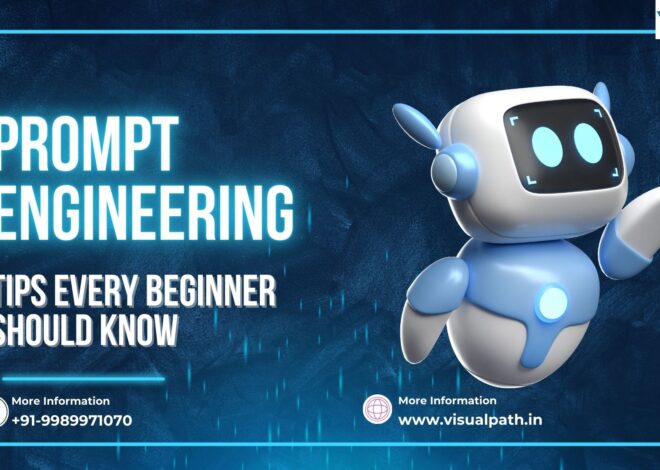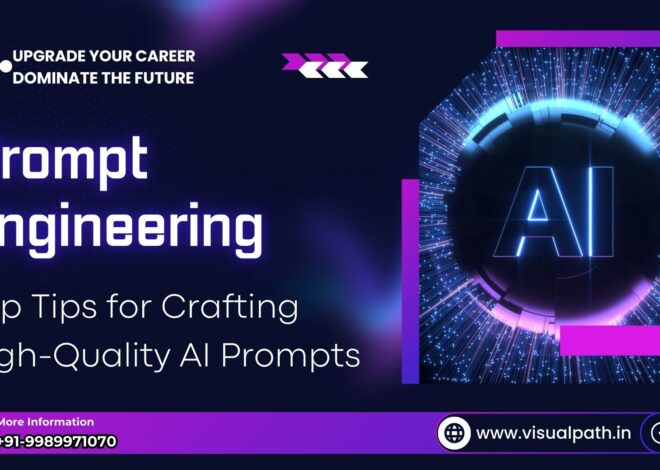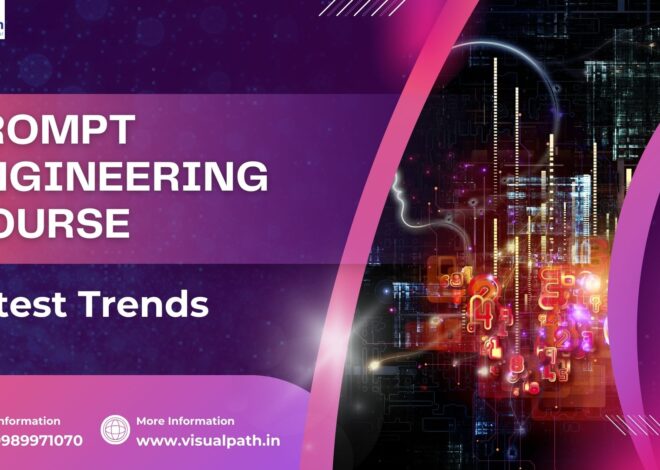
Prompt Engineering Course: Master the Art of Crafting Effective Prompts
Prompt Engineering Course has gained significant attention as artificial intelligence (AI) technologies become integral to various industries. Prompt engineering involves designing precise instructions, or prompts, that guide AI models to generate accurate and relevant responses. Crafting effective prompts is an essential skill for anyone working with AI, whether for natural language processing, automation, or advanced problem-solving tasks.
Through a Prompt Engineering Training, individuals can master this skill and enhance their interactions with AI tools like GPT-4, ChatGPT, and similar models. This article explores practical tips for crafting effective prompts, the challenges you might face, and how structured learning from a Prompt Engineering Course can help you achieve proficiency in this growing field.
The Importance of Effective Prompts in AI
Artificial intelligence models are designed to process human language and generate responses based on the input they receive. These models rely significantly on clear and specific inputs. An unclear or poorly crafted prompt can result in irrelevant, ambiguous, or inaccurate responses, leading to wasted time and resources.
Understanding how to create effective prompts is especially important for businesses leveraging AI for customer service, content generation, data analysis, and decision-making. Learning these techniques through a Prompt Engineering Training ensures you know how to design inputs that maximize the accuracy and utility of AI outputs.
Top Tips for Crafting Effective Prompts
1. Start with a Clear Objective
The first step to crafting an effective prompt is defining your goal. Determine what outcome you want the AI model to deliver. Whether you’re seeking factual data, creative content, or problem-solving advice, the clarity of your objective is key.
Poor Example: “Tell me about technology.”
Effective Example: “Provide a brief history of the development of smartphones from 2000 to 2024.”
By enrolling in a Prompt Engineering Course, you will learn how to frame objectives in a manner that avoids ambiguity and ensures the AI stays focused on your desired outcomes.
2. Provide Context
Context is crucial for AI models to generate accurate responses. When the model has a clear understanding of the background or scenario, it can provide more precise and relevant results.
Poor Example: “What’s the best strategy?”
Effective Example: “What’s the best digital marketing strategy for a startup in the e-commerce sector?”
A Prompt Engineering Training program often emphasizes the importance of including sufficient details to guide AI models effectively, especially in real-world applications.
3. Use Specific Language
Vagueness in prompts leads to incomplete or off-target responses. Use precise terminology to minimize misunderstandings and to get the most out of the AI model’s capabilities.
Poor Example: “Tell me about climate change.”
Effective Example: “Describe how industrial activities contribute to global warming and suggest three strategies for mitigation.”
Students in a Prompt Engineering Course learn to dissect broad topics into focused questions that yield actionable insights.
4. Experiment with Prompt Structure
The way you structure your prompt can have a major impact on the output. For example, breaking down complex queries into lists, bullet points, or step-by-step instructions can yield better results.
This method is a staple in Prompt Engineering Training, where participants practice experimenting with different prompt structures to refine the model’s responses.
5. Keep Prompts Concise
While it’s important to include context and detail, overly lengthy prompts can confuse the AI model. Keep your prompts concise yet informative.
Instead of: “Can you write an article about the benefits of AI technology in various industries like healthcare, education, and transportation, and explain how it can help small businesses and large corporations alike?”
In a Prompt Engineering Course, concise communication is emphasized to ensure maximum efficiency when working with AI tools.
6. Iteration and Feedback
Prompt crafting often requires multiple iterations. Testing and refining your prompts based on the model’s outputs is key to success. Iterative learning is central to Prompt Engineering Training, where participants are encouraged to analyze AI responses and tweak their inputs for better results.
Initial Prompt: “Explain how AI works.”
7. Incorporate Examples in Prompts
Providing examples in your prompts can help the AI understand the desired format or style of the response.
Using examples is a technique frequently practiced in Prompt Engineering Training to achieve high-quality, contextually appropriate outputs.
Benefits of a Prompt Engineering Course
Attending a Prompt Engineering Course is an excellent way to develop the skills necessary for interacting with AI tools effectively. These courses cover everything from the basics of prompt design to advanced techniques like multi-turn dialogue prompts and scenario-based inputs.
By enrolling in a Prompt Engineering Training, participants gain hands-on experience with real-world case studies and advanced AI models. These programs also provide guidance on industry-specific applications, such as crafting prompts for customer service, technical writing, or marketing campaigns.
Real-World Applications of Prompt Engineering
Effective prompt engineering has applications across various industries:
Content Creation: Writers and marketers use AI to generate blogs, social media posts, and ad copies by providing clear and structured prompts.
Customer Support: Businesses optimize chatbots to deliver accurate and empathetic responses to customer inquiries.
Data Analysis: Analysts create prompts that help AI extract, summarize, and interpret large datasets.
Education: Educators design prompts to create custom lesson plans or quizzes tailored to different learning levels.
Each of these use cases benefits from training in a Prompt Engineering Course, where participants learn techniques to tailor prompts for specific industry needs.
Overcoming Common Challenges
Prompt crafting comes with its challenges, such as dealing with vague or irrelevant outputs, AI biases, and limitations in contextual understanding. A Prompt Engineering Training program addresses these issues by teaching participants how to refine prompts iteratively, mitigate biases, and manage expectations from AI models.
Conclusion
Crafting effective prompts is an invaluable skill in the age of AI. With clear objectives, contextual detail, specific language, and iterative refinement, you can guide AI models to produce meaningful and accurate results.
Investing in a Prompt Engineering Course or Prompt Engineering Training is a step toward mastering this essential skill. These programs provide comprehensive knowledge, practical exercises, and expert guidance, enabling you to unlock the full potential of AI technologies.
Start applying the tips shared here, and elevate your AI interactions to the next level. Whether for professional or personal use, mastering prompt engineering will empower you to make the most of today’s advanced AI models.
Visualpath is the Leading and Best Institute for learning in Hyderabad. We provide Prompt Engineering courses online. You will get the best course at an affordable cost.
Attend Free Demo
Call on – +91-9989971070
What’s App: https://www.whatsapp.com/catalog/919989971070/
Visit: https://www.visualpath.in/prompt-engineering-course.html



